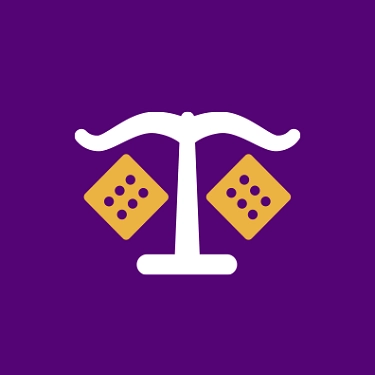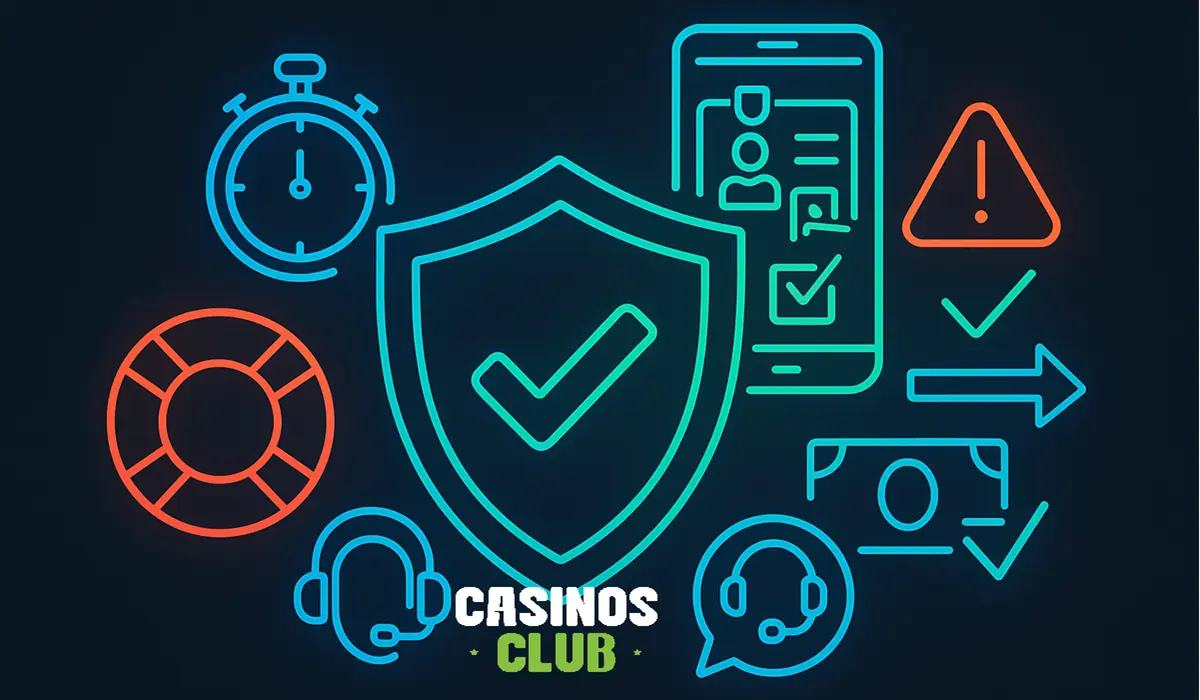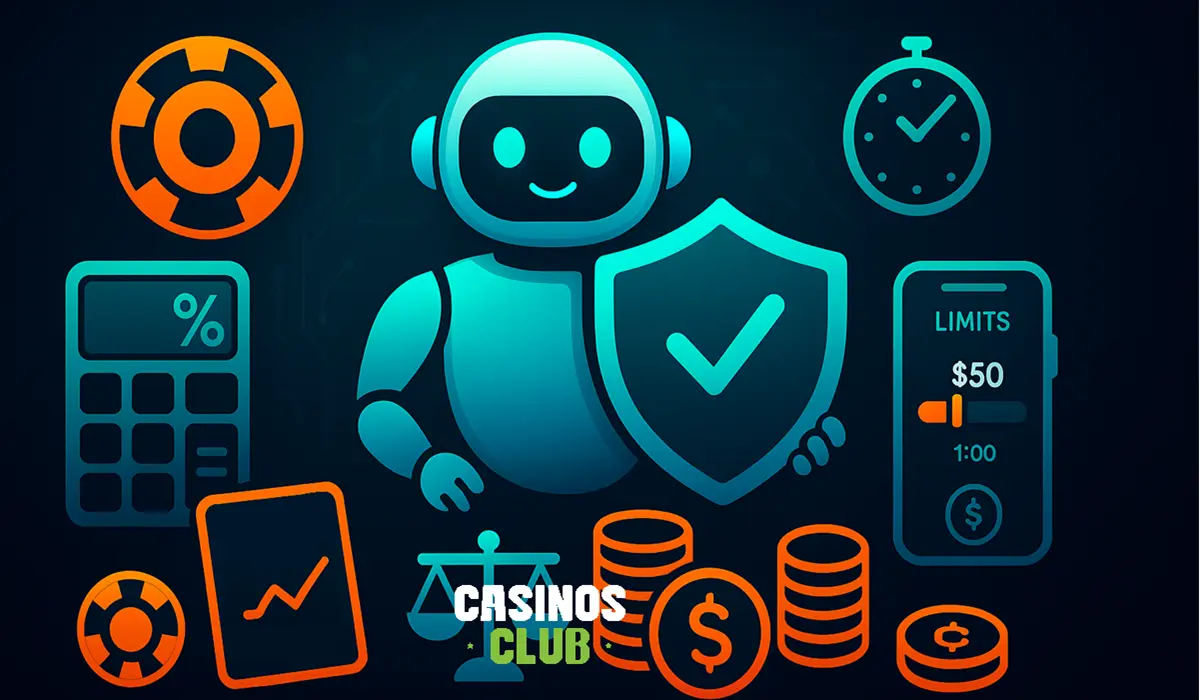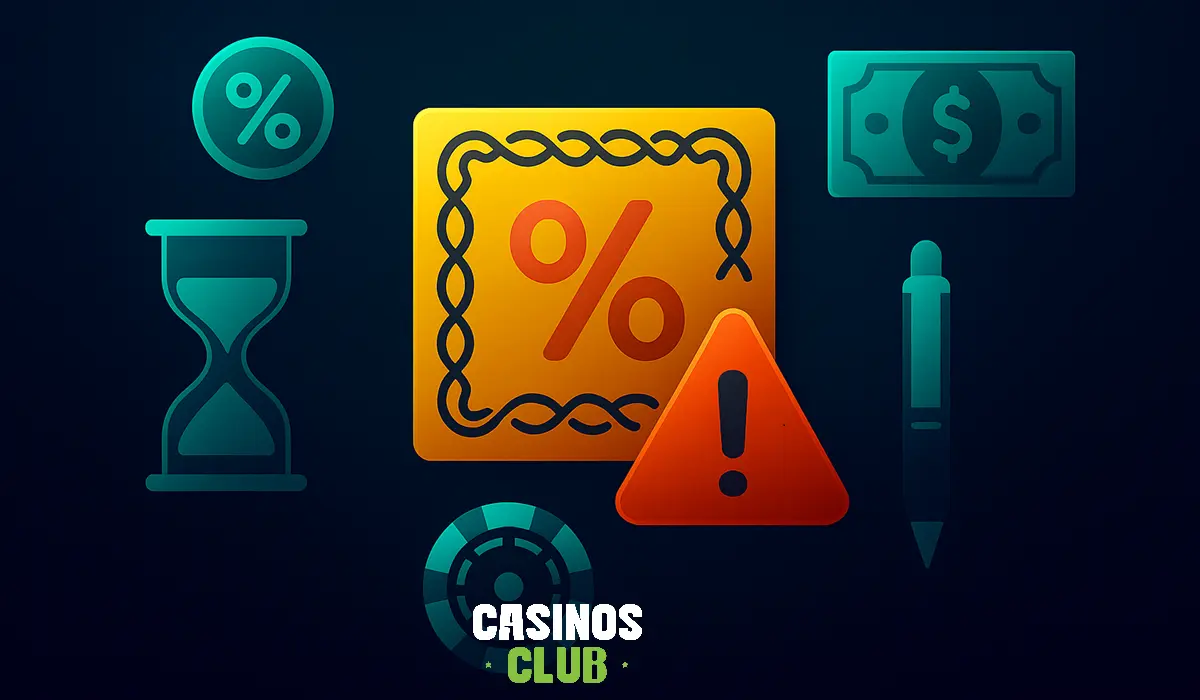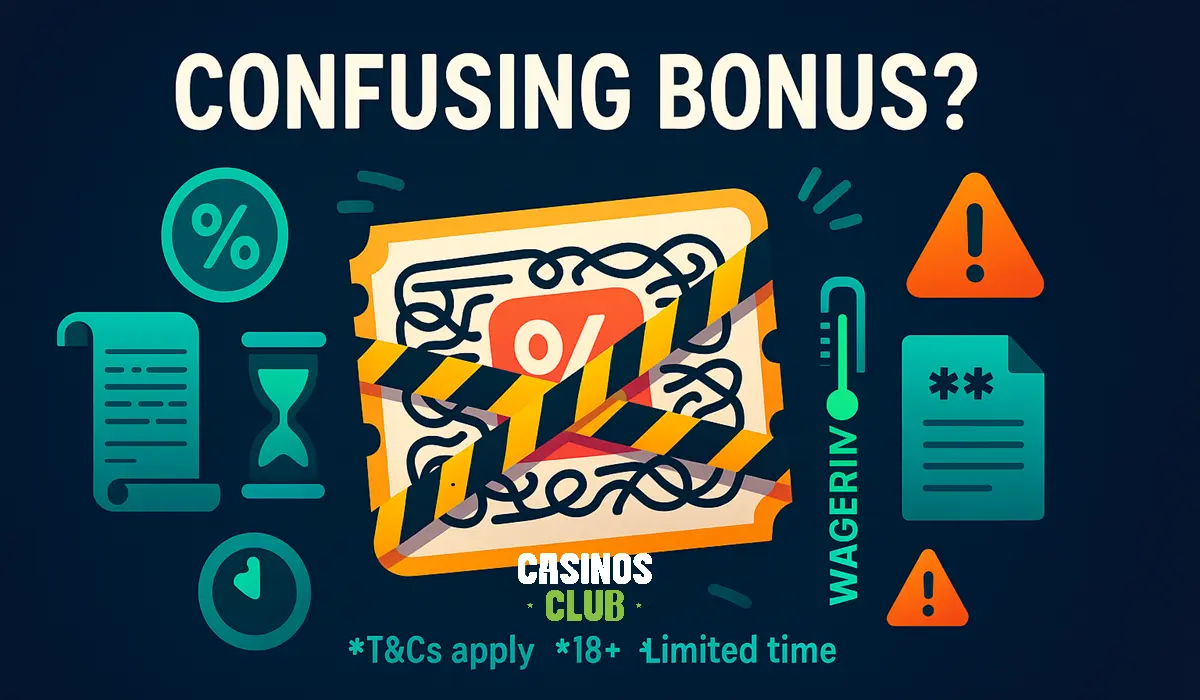
17 January 2025
Poker Cheat Sheet - 4/2, Poker Position and Texas Hold 'em Hands
A poker cheat sheet is an essential tool for players looking to enhance their skills. If you're looking to master poker, a cheat sheet is an important tool. It provides quick, accessible references for hand rankings, starting hands, odds, and other vital strategies that can improve your game. Designed for beginners and pros alike, a poker cheat sheet helps you make informed decisions during gameplay. From understanding poker hands cheat sheets to using a printable poker cheat sheet, this guide ensures you have everything to succeed at the table.
Poker Hands Cheat Sheet
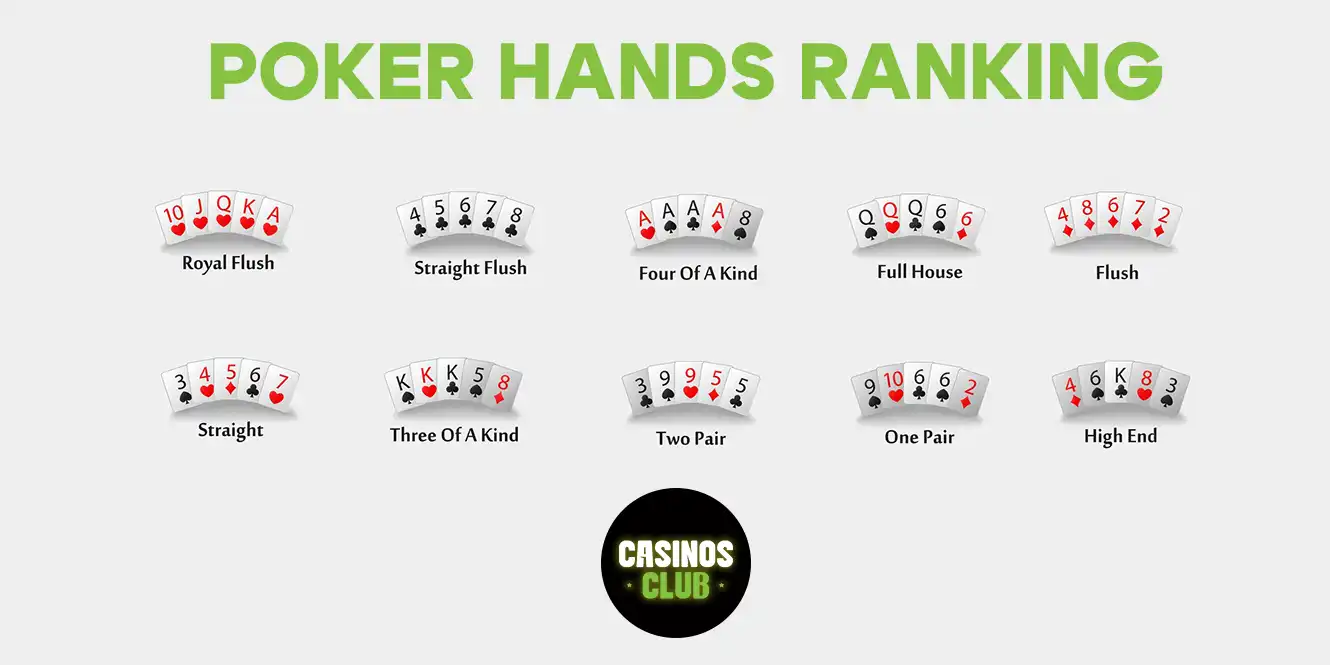
Poker hands cheat sheet is a cornerstone for mastering the game. Understanding the ranking of poker hands is critical for making strategic decisions. In Texas Hold’em and most poker variants, knowing which hands are stronger helps you assess your odds and determine your best moves. Here’s a breakdown of poker hand rankings, including a printable poker cheat sheet for quick reference.
Understanding Poker Hand Rankings
Poker hands are ranked from strongest to weakest. Here is the order of poker hands as they appear in the official Texas Hold’em cheat sheet:
- Royal Flush: A, K, Q, J, 10, all of the same suit.
- Straight Flush: Five consecutive cards of the same suit (e.g., 8, 9, 10, J, Q of hearts).
- Four of a Kind: Four cards of the same rank (e.g., 9, 9, 9, 9, 2).
- Full House: Three cards of one rank and two of another (e.g., 7, 7, 7, K, K).
- Flush: Any five cards of the same suit, not in sequence.
- Straight: Five consecutive cards of mixed suits.
- Three of a Kind: Three cards of the same rank (e.g., Q, Q, Q, 5, 2).
- Two Pair: Two sets of two cards of the same rank (e.g., J, J, 8, 8, 3).
- One Pair: Two cards of the same rank (e.g., 10, 10, 5, 7, 2).
- High Card: When no other hand qualifies, the highest card wins.
Texas Hold’em Hands Cheat Sheet: Order of Poker Hands
The poker hand cheat sheet is a must-have, especially for beginners. It ensures you recognize the strength of your hand in real time, helping you decide when to bet, call, or fold. Using a Texas Hold’em cheat sheet printable, you can keep these rankings by your side during games for quick decisions.
Printable Poker Hands Chart: A Quick Reference Guide
A printable poker cheat sheet is perfect for beginners. These reference charts detail poker hand rankings and simplify gameplay for novices. Using a poker card sheet, whether you're at a live table or playing online, can significantly enhance your confidence and precision. With numerous websites providing free poker cheat sheets, it's never been easier to download and print your very own. Don't miss out on this simple tool to improve your game!
Poker Tips for Memorizing Poker Hands
- Practice with flashcards featuring hand rankings.
- Refer to a poker cheat sheet printable pdf during casual games.
- Use mobile apps with cheat sheet poker hands charts for on-the-go learning.
Poker Starting Hands Cheat Sheet
Your choice of starting hands is one of the most critical factors in poker success. A poker starting hands cheat sheet helps players determine which hands to play, fold, or raise with, based on position and other variables. Understanding the strength of your starting hands and how they play in different scenarios is essential for improving your gameplay.
Best Starting Hands in Texas Hold’em
The following starting hands are considered strong and should often be played aggressively:
- Pocket Aces (AA): The best starting hands in Texas Hold’em. Always play aggressively.
- Pocket Kings (KK): Another premium hand; be cautious only if an Ace appears on the flop.
- Pocket Queens (QQ): A strong hand, but play cautiously against aggressive opponents with high cards.
- Ace-King Suited (AKs): Known as "Big Slick," it has high potential for strong post-flop combinations.
- Pocket Jacks (JJ): A solid hand but can be tricky, especially against overcards on the board.
Good Hands by Poker Position
The position at the table significantly influences which hands to play. A starting hand poker cheat sheet can simplify this decision-making process.
- Early Position: Play only premium hands (AA, KK, QQ, AKs).
- Middle Position: Expand your range slightly to include AQ, AJs, KQs, and TT.
- Late Position: Play a wider range of hands, including suited connectors (e.g., 9♥-10♥) and low pairs.
Starting Hand Strategy Based on Poker Position
Your position at the table is key to maximizing the value of your starting hands. Here’s a breakdown:
- Early Position (EP): Act cautiously, as you have limited information about opponents.
- Middle Position (MP): Balance aggression and caution, as you have more information than EP but less than late positions.
- Late Position (LP): Take advantage of the most information available. This is where you can bluff more often and play speculative hands.
Printable Starting Hand Poker Cheat Sheet for Beginners
A printable poker cheat sheet for starting hands is an excellent tool for beginners. It allows players to quickly reference the best hands to play based on their poker position at the table. Many online poker guides and resources offer free printable poker cheat sheets tailored for starting hands.
Poker Tips for Using Starting Hands Cheat Sheets
- Always consider the table dynamics and opponents’ tendencies.
- Use cheat sheets as guidelines, not rigid rules; adapt to the game’s flow.
- Combine cheat sheets with knowledge of odds and outs for better decision-making.
Lowest Pocket Pair in Poker
In poker, a pocket pair occurs when both of your hole cards are of the same rank, such as 2♥-2♣ or K♦-K♠. While higher pocket pairs like Aces (AA) and Kings (KK) are strong and easy to play, lower pocket pairs can be more challenging. Understanding how to play the lowest pocket pair in poker is essential for making strategic decisions, especially in Texas Hold’em.
What is the Lowest Pocket Pair in Poker?
The lowest pocket pair is 2♦-2♣, often referred to as "Deuces." While it’s the weakest pocket pair, it still holds value because it can:
- Improve to a set (three of a kind) on the flop.
- Potentially win in showdowns if opponents fail to improve their hands.
Strategies for Playing Low Pocket Pairs
Playing the lowest pocket pair requires careful consideration of position, opponents, and stack size. Here are some key strategies:
- Play Conservatively in Early Position
- In early positions, play cautiously as you’ll have limited information about your opponents’ hands.
- Consider folding if there’s a raise and you lack implied odds to call.
- Call Small Raises in Middle or Late Position
- Use your position to your advantage by calling small raises to see a flop.
- Low pairs like Deuces have a higher chance of hitting a set, which can be very profitable.
- Look for Set-Mining Opportunities
- “Set-mining” refers to calling pre-flop with the hope of hitting a set on the flop.
- The odds of flopping a set with a pocket pair are approximately 11.8% (1 in 8.5).
- Avoid Overplaying Low Pairs
- If the board doesn’t improve your hand, avoid committing too many chips.
- Low pocket pairs are vulnerable to overcards, which frequently appear on the flop.
When to Fold the Lowest Pocket Pair
There are scenarios where folding the lowest pocket pair is the best option:
- Facing Aggression Pre-Flop: If there’s a significant raise or re-raise, Deuces often won’t hold enough value to call.
- Poor Position: In early position, playing Deuces exposes you to significant risks with little information on opponents.
- Short Stacks: With a short stack, it’s better to wait for stronger hands to commit your chips.
When to Go All-In with Low Pocket Pairs
While rare, there are situations where going all-in with a low pocket pair is appropriate:
- Short-Stacked in a Tournament: When you have fewer than 10 big blinds, shoving all-in with Deuces can be viable.
- Heads-Up Play: In heads-up situations, pocket pairs—even the lowest ones—hold higher relative strength.
Poker Tips for Playing Low Pocket Pairs Effectively
- Know Your Opponents: Against tight players, low pairs may hold more value since they’re less likely to contest weak boards.
- Position is Key: Play low pairs more aggressively in late positions where you have better control over the action.
- Flop Awareness: If the flop is unfavorable (e.g., high cards or coordinated suits), consider folding early.
The Value of the Lowest Pocket Pair in Poker
Although the lowest pocket pair is not as strong as higher ones, it can still be a winning hand when played strategically. It’s particularly effective in multi-way pots where set-mining can lead to significant rewards.
Understanding the Big Blind Small Blind in Poker
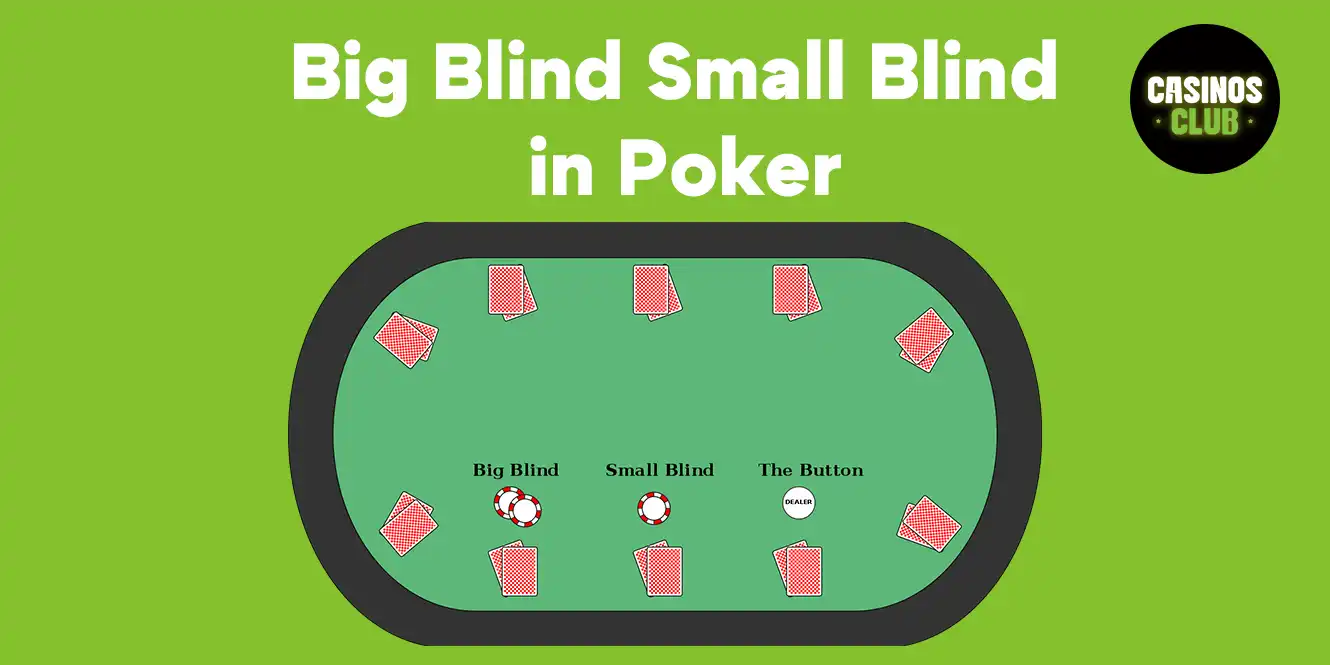
In poker, the big blind small blind are mandatory bets that initiate the action in most variants, including Texas Hold’em. These forced bets ensure there’s money in the pot to play for and influence the dynamics of every hand. Knowing how to play effectively from these positions is crucial for long-term success.
What Are the Bing Bling Small Blind?
- Small Blind (SB): The player to the immediate left of the dealer posts the small blind. This bet is typically half the size of the big blind.
- Big Blind (BB): The player to the left of the small blind posts the big blind, which is a full bet.
For example, in a $1/$2 game:
- The small blind is $1.
- The big blind is $2.
Strategic Importance of the Big Blind Small Blind
The blinds create forced action, making players think critically about their hands and position. Playing from the blinds can be tricky since you’re at a positional disadvantage after the flop.
How to Play the Small Blind
- Pre-Flop Play:
- Be cautious when entering pots from the small blind, as you’ll be out of position for the rest of the hand.
- Only play strong hands like high pairs, suited connectors, or high cards.
- Post-Flop Play:
- Defend the small blind aggressively if the big blind folds and you face a single opponent.
- Avoid bluffing too often, as opponents have a positional advantage.
How to Play the Big Blind
- Defending the Big Blind:
- Since you’ve already posted a full bet, you can afford to defend more hands, especially against late-position raises.
- Use pot odds to decide whether to call or fold.
- Post-Flop Adjustments:
- Leverage the pot odds and your opponent’s tendencies to make decisions.
- Be cautious against aggressive players who might exploit your position.
Common Big Blind Small Blind Mistakes
- Over-Defending: Playing too many hands from the small or big blind can lead to losing chips over time.
- Ignoring Position: Failing to adjust your strategy for post-flop play can result in costly mistakes.
- Passive Play: Not raising or re-raising in spots where aggression is warranted weakens your range.
Takeaways
- Blinds are foundational to poker strategy, creating initial action and influencing the flow of the game.
- The small blind requires cautious, strategic play due to its positional disadvantage.
- The big blind allows for more flexibility but demands careful decision-making to avoid overcommitting chips.
Poker Odds Cheat Sheet
Understanding poker odds is fundamental for making informed decisions at the table. A poker odds cheat sheet provides quick references to the probabilities of hitting specific hands or outcomes during gameplay. Whether you're calculating the odds of completing a straight or deciding whether to call a bet, this cheat sheet will help you play smarter.
What Are Poker Odds and Why They Matter?
Poker odds represent the likelihood of specific events occurring, such as making a winning hand or drawing the cards you need. Using a poker cheat sheet, you can compare the pot odds (the ratio of the pot size to the bet) with the odds of completing your hand to determine whether a call is profitable.
For example:
- If the pot offers 4:1 odds and your chance of completing a hand is 20% (or 4:1), calling the bet is mathematically correct.
Common Poker Odds and Probabilities
Here are some of the most important poker odds to keep in mind:
|
Scenario |
Odds |
Example |
|
Hitting a pair on the flop |
32.43% (about 1:2) |
Starting with AK and pairing one on the flop. |
|
Flopping a set with a pocket pair |
11.8% (about 1:8) |
Starting with 7♠-7♣ and hitting 7♦ on the flop. |
|
Completing a flush draw |
35% (about 1:2.9) |
Holding two hearts and hitting a flush on the river. |
|
Completing a straight draw |
31.5% (about 1:3) |
Holding 8♠-9♠ and completing a straight on the river. |
Texas Hold’em Poker Odds Cheat Sheet
A Texas Hold’em poker cheat sheet simplifies these probabilities into an easy-to-follow guide:
- Pre-Flop Odds:
- Pocket Aces (AA) vs. random hand: 81% chance of winning.
- Pocket Kings (KK) vs. random hand: 78% chance of winning.
- Flop Odds:
- Hitting a flush draw with suited cards: 11% (1 in 9 chance).
- Making two pairs with unsuited cards: 2% (1 in 50 chance).
- Turn and River Odds:
- Improving to a full house with trips: 8% (1 in 12 chance).
- Hitting a four-of-a-kind from a set: 2% (1 in 50 chance).
Using a Poker Odds Cheat Sheet During Play
- Quick Reference: Keep a printable poker odds cheat sheet handy to compare pot odds and probabilities.
- Decision-Making: Combine odds with pot size and your bankroll to make informed calls or folds.
- Confidence Building: Understanding the numbers boosts confidence in your decisions and strategy.
Practical Example
Let’s say you hold A♦-K♦, and the flop shows Q♦-10♦-4♠. You need a Jack for a straight or any diamond for a flush. Using a poker probability cheat sheet, you find:
- Flush odds: 9 outs, ~35% chance.
- Straight odds: 3 additional outs, ~12% chance.
Combined, you have a ~47% chance of hitting a strong hand, which can guide your betting decisions.
This poker odds cheat sheet ensures you make data-driven decisions and improve your overall game
Understanding the 4/2 Rule for Pot Odds
The 4/2 Rule is a quick and easy way to calculate your odds of improving your hand in poker. It helps you estimate the likelihood of hitting your desired card (outs) on the next street and whether calling a bet is mathematically profitable.
How Does the 4/2 Rule Work?
- Count Your Outs: Identify how many cards can improve your hand.
- Example: If you’re on a flush draw, there are 9 cards (outs) remaining in the deck that can complete your flush.
- Multiply by 2 or 4:
- Multiply your outs by 2 to estimate the chance of hitting your card on the next street (turn or river individually).
- Multiply your outs by 4 to estimate the chance of hitting by the river (both the turn and river combined).
Example: Flush Draw Odds
- You hold A♠-K♠, and the flop is 7♠-9♠-2♦.
- You need one more spade to complete your flush, giving you 9 outs.
- Turn Odds: 9 × 2 = 18% chance of hitting on the turn.
- River Odds: 9 × 4 = 36% chance of hitting by the river.
Using the 4/2 Rule for Pot Odds
Compare the percentage from the 4/2 rule with the pot odds (the ratio of the current pot to the bet you need to call). If the odds of hitting your outs are greater than the pot odds, it’s a profitable call.
Calculating Outs Cheat Sheet
Calculating outs is a crucial skill in poker that allows you to estimate your chances of improving your hand. An outs cheat sheet provides a clear guide to understanding the number of cards that can strengthen your hand and how to use this information in gameplay. Whether you’re a beginner or a seasoned player, mastering this concept with a poker cheat sheet will give you a strategic edge.
What Are Outs in Poker?
Outs are the cards left in the deck that can improve your hand to a likely winner. For instance:
- If you have a flush draw with four hearts, there are nine remaining hearts in the deck that can complete your flush. These nine cards are your outs.
How to Calculate Outs
Here’s a step-by-step process for calculating outs:
- Identify Your Draw: Determine what you need to complete a stronger hand (e.g., a flush, straight, or pair).
- Count Your Outs: Calculate the total number of cards that can complete your draw.
- Consider Opponents’ Hands: Adjust your outs count if it’s likely that your opponents have cards that block your draw.
Example:
You hold 8♥-9♥, and the flop is 6♥-7♠-K♣. You need a 5 or a 10 to complete your straight. There are four 5s and four 10s in the deck, giving you 8 outs.
The Rule of 2 and 4
To estimate your chances of hitting an out:
- Multiply your outs by 2 to calculate the approximate percentage of hitting on the next card.
- Multiply your outs by 4 to estimate the percentage of hitting by the river.
Example: With 8 outs:
- Next Card Odds: 8 × 2 = 16% chance.
- River Odds: 8 × 4 = 32% chance.
Common Outs Scenarios
|
Scenario |
Outs |
Example |
|
Completing a flush |
9 outs |
4 hearts on the board, 9 remaining hearts in the deck. |
|
Open-ended straight draw |
8 outs |
4 cards on either end of your straight. |
|
Inside (gutshot) straight |
4 outs |
1 specific card needed to complete the straight. |
|
Pair improving to trips |
2 outs |
2 cards left in the deck matching your pair. |
Using a Poker Probability Cheat Sheet
A poker cheat sheet for calculating outs simplifies this process during gameplay. It lists common scenarios and their corresponding outs, helping you quickly determine the odds of hitting your desired hand. Many players keep a poker cheat sheet pdf with outs and probabilities handy for reference.
Practical Example of Calculating Outs
You have A♠-J♠, and the board shows K♠-Q♠-7♦. You need:
- A spade for a flush: 9 outs.
- A 10 for a straight: 3 additional outs.
In total, you have 12 outs to improve your hand. Using the rule of 2 and 4, you estimate:
- Turn Odds: 12 × 2 = 24% chance.
- River Odds: 12 × 4 = 48% chance.
This quick calculation, combined with a poker odds cheat sheet, informs your decision to bet, raise, or fold.
Poker Tips for Calculating Outs
- Avoid counting outs for cards that could also strengthen your opponents' hands.
- Practice regularly to speed up your calculations.
- Use a poker cheatsheet during casual games for faster reference.
Printable Poker Cheat Sheets
A printable poker cheat sheet is a valuable resource for players who prefer having physical references during their games. These cheat sheets provide clear, concise information about poker rules, hand rankings, starting hands, odds, and outs. They are especially useful for beginners looking to learn the game and seasoned players refining their strategies. A poker cheat sheet to print can be your go-to guide for quick decisions at the table.
Why Printable Poker Cheat Sheets Are Convenient
- Accessibility: A poker sheet cheat ensures that vital information is always within reach, even if you’re playing offline or in casual home games.
- Ease of Use: With clearly organized sections, a printable poker cheat sheet simplifies complex concepts, making it easier to reference during play.
- Improved Learning: Beginners benefit from having a physical resource to reinforce their understanding of poker strategies and terminology.
How to Create Your Own Poker Cheat Sheet PDF
Creating a customized poker cheat sheet pdf allows you to tailor the information to your needs. Follow these steps:
- Identify Key Areas: Include sections on hand rankings, starting hands, odds, and outs.
- Organize by Priority: Place the most frequently referenced information, like hand rankings, at the top.
- Use Visual Aids: Incorporate charts and tables for quick and easy readability.
- Save and Print: Save your sheet as a PDF and print copies for personal use.
Alternatively, download pre-made free printable poker cheat sheets from reputable websites to save time.
Best Printable Poker Cheat Sheets for Beginners
Many websites offer pre-designed cheat sheets that are ideal for beginners. These sheets cover everything from the order of poker hands cheat sheet to starting hands strategies. Here are a few types to consider:
- Texas Hold’em Cheat Sheets:
- Includes hand rankings, pre-flop strategies, and basic odds.
- Ideal for beginners learning Texas Hold’em.
- Poker Hand Cheat Sheet PDF:
- Focuses on hand rankings and probabilities.
- Useful for recognizing the strength of your hand quickly.
- Advanced Printable Poker Sheets:
- Includes detailed sections on pot odds, poker position strategies, and post-flop play.
- Great for intermediate and advanced players.
Free Printable Poker Cheat Sheets Online
Several websites offer downloadable poker cheat sheets for free:
- CasinosClub: Offers a comprehensive Texas Hold’em cheat sheet printable with hand rankings and strategy tips.
- PokerNews: Features beginner-friendly printable poker cheat sheets covering odds and starting hands.
- My Poker Coaching: Provides customizable poker rules sheets and strategy guides for different poker variants.
How to Use Printable Poker Cheat Sheets
- During Games: Keep the sheet nearby to quickly reference hand rankings and odds.
- For Practice: Use it during practice sessions to familiarize yourself with poker strategies.
- For Learning: Refer to the cheat sheet while studying poker rules and concepts.
Poker Tips for Maximizing Printable Poker Cheat Sheets
- Laminate your sheet to keep it durable and reusable.
- Customize the layout to include only the information you need most frequently.
- Use it as a supplement, not a crutch, and focus on improving your memory and instincts over time.
A printable poker cheat sheet is a practical tool for players of all levels. In the next section, we’ll explore advanced cheat sheets and strategies, including those for specific poker variants like Jacks or Better and 5-Card Draw.
Advanced Poker Cheat Sheets and Strategies
For seasoned players aiming to refine their game, advanced poker cheat sheets delve deeper into specific strategies and variants. From Jacks or Better cheat sheets to specialized guides for 5-Card Draw, these tools help experienced players optimize their decisions and improve their odds of winning. Below, we explore some advanced cheat sheet poker options and their applications.
Cheat Sheets for Jacks or Better
Jacks or Better is a popular poker variant in video poker and live play. Using a Jacks or Better cheat sheet can help players make optimal decisions based on the dealt cards. Here are some essentials:
- Hold High Cards: Always keep Jacks, Queens, Kings, or Aces to increase your chances of forming pairs or stronger combinations.
- Go for Royal Flush Draws: Retain cards that are part of a potential Royal Flush whenever possible.
- Pairs Over Flush Draws: If you have a low pair and a flush draw, prioritize keeping the pair.
Example:
With a hand of J♠, Q♠, 7♥, 7♦, and 2♣:
- Keep the pair of 7s for a better chance of a winning hand rather than chasing an unlikely flush.
5-Card Draw Cheat Sheet: A Beginner’s Guide
In 5-Card Draw, decision-making is key to success. A 5-card poker cheat sheet simplifies strategies for new players by breaking down hand selection and draw strategies.
- Keep High Pairs: Always hold onto a pair of 10s or higher.
- Chase Straights and Flushes: Retain consecutive cards or suited cards if you’re close to completing a straight or flush.
- Discard Low Cards: Remove cards that don’t contribute to any strong combination.
Example:
Hand: 10♣, 10♦, K♠, 7♣, 3♠
- Discard the 7♣ and 3♠ to draw for a stronger hand, keeping the pair of 10s and King kicker.
Pot Odds Cheat Sheet for Advanced Players
A pot odds cheat sheet helps advanced players calculate whether a call is profitable in terms of risk vs. reward. Pot odds compare the size of the pot to the size of the bet required to call. By combining pot odds with your calculated outs, you can determine whether to continue in the hand.
- Formula: Pot Odds = (Current Pot Size / Bet Size)
- Compare this ratio to your chances of hitting your outs using the rule of 2 and 4.
Example:
- Pot size: $100, Bet size: $20
- Pot odds = 100 / 20 = 5:1
- If your chance of hitting an out is 20% (4:1), the call is mathematically correct.
Advanced Texas Hold’em Cheat Sheets
For Texas Hold’em, advanced poker cheat sheet pdf resources focus on post-flop play, poker position strategies, and bluffing techniques:
- Post-Flop Cheat Sheet:
- Evaluate the board texture (dry vs. wet) and adjust your aggression.
- Use outs and odds to decide whether to bet, call, or fold.
- Poker Position Strategy Cheat Sheet:
- Play aggressively in late poker position to exploit weaker players.
- Tighten your range in early poker position to avoid overexposing your hand.
- Bluffing Cheat Sheet:
- Bluff on boards that favor your perceived range.
- Avoid bluffing against overly aggressive opponents.
Poker Tips for Using Advanced Poker Cheat Sheets
- Practice in low-stakes games to refine your use of advanced cheat sheets.
- Combine cheat sheets with live reads and table dynamics for optimal decision-making.
- Continuously update your cheat sheet with insights from your gameplay.
Poker Tips for Using a Poker Cheat Sheet Effectively
A poker cheat sheet is a powerful tool, but its effectiveness depends on how you use it. Whether you’re referencing a poker hand cheat sheet, a poker odds cheat sheet, or a starting hand poker cheat sheet, integrating it into your gameplay requires a strategic approach. This section provides practical tips for maximizing the benefits of a poker cheat sheet while avoiding common pitfalls.
Practical Tips for Beginners
- Familiarize Yourself Before the Game
Before you start playing, study your poker cheat sheet. Knowing where key information is located will save time and keep you focused during play. - Use It During Casual Games
Practice using cheat sheets in low-stakes games or with friends. This helps you develop a rhythm and minimizes disruptions in more competitive settings. - Start with the Basics
For beginners, prioritize learning the poker hand cheat sheet and starting hands poker cheat sheet. These foundational tools will set you up for success in later stages of the game. - Combine with Poker Tutorials
Supplement your cheat sheet with online tutorials, video guides, or poker books. This reinforces your understanding and helps integrate knowledge into your gameplay.
Adapting Cheat Sheets to Your Poker Style
Every player has a unique style, and your poker cheatsheet should reflect this. Here’s how to customize it:
- Aggressive Players: Focus on cheat sheets that emphasize betting strategies and bluffing.
- Conservative Players: Use a poker odds cheat sheet to ensure that you’re making mathematically sound decisions.
- Balanced Players: Combine hand rankings, outs, and poker position strategies to maintain a versatile approach.
Common Mistakes to Avoid When Using Poker Sheets
- Overreliance on the Cheat Sheet
Avoid using a poker cheat sheet as a crutch. While it’s helpful, success in poker also requires intuition, observation, and adaptability. - Ignoring Opponents’ Play Styles
Don’t solely focus on your cheat sheet. Pay attention to how your opponents are betting and adjust your strategy accordingly. - Using Outdated Cheat Sheets
Poker strategies evolve over time. Regularly update your cheat sheets with new insights and tips to stay competitive. - Failing to Adapt to Game Variants
Different poker games, like Texas Hold’em, Omaha, and 5-Card Draw, require unique strategies. Use a variant-specific poker cheat sheet to ensure relevance.
Combining Cheat Sheets for Maximum Effectiveness
For best results, use multiple cheat sheets together:
- A poker hand rankings cheat sheet for understanding hand strength.
- A starting hand poker cheat sheet for pre-flop decisions.
- A poker odds cheat sheet for calculating pot odds and outs.
Building Confidence with Cheat Sheets
The more you use a poker cheat sheet for beginners, the more confident you’ll become in your decision-making. Over time, you’ll rely less on the sheet and more on your intuition and expertise.
Mastering the Game with Poker Cheat Sheets
A poker cheat sheet is more than just a tool—it’s your guide to becoming a smarter, more strategic player. From understanding hand rankings with a poker hand cheat sheet to improving decision-making with a poker odds cheat sheet, these resources simplify complex concepts and empower players at every level.
Why Poker Cheat Sheets Are Important
- For Beginners: A poker cheat sheet for beginners provides foundational knowledge, covering hand rankings, starting hands, and rules. Having a poker card cheat sheet or a poker hand rankings cheat sheet on hand builds confidence during your first games.
- For Advanced Players: Tools like a starting hand poker cheat sheet, cheat sheet poker hands, and poker reference sheets support advanced strategies, from calculating pot odds to mastering bluffing techniques.
- Universal Utility: Whether you play Texas Hold’em, 5-Card Draw, or Jacks or Better, a tailored cheat sheet for poker ensures you’re always prepared.
Printable Poker Cheat Sheets for All Levels
- Beginners: Start with a free printable poker cheat sheet covering basic hand rankings and rules.
- Intermediate Players: Use a Texas Hold’em cheat sheet printable to refine your starting hand and post-flop strategies.
- Advanced Players: Explore poker cheatsheets focused on pot odds, position strategies, and variant-specific rules.
How to Integrate Cheat Sheets into Your Gameplay
- Preparation: Use a poker cheat sheet printable pdf to practice outside the game.
- Application: Rely on your poker cheat cheat during live games to make better decisions.
- Adaptation: Customize your poker cheat sheet hands to suit your style and the poker variant you play.
Final Tips for Success
- Practice Regularly: The more you use cheat sheets like the poker starting hands cheat sheet, the more natural they’ll become in your gameplay.
- Stay Updated: Update your cheat sheets to reflect the latest strategies and trends in poker.
- Confidence is Key: Relying on tools like a poker beginner hands cheat sheet or a texas hold'em cheat sheet printable builds confidence, which is invaluable at the table.
Your Path to Poker Success
Even if you’re playing online or in person, a poker cheat sheet free of charge can transform your experience. It’s the perfect way to bridge the gap between beginner knowledge and expert play. With resources like a poker hand sheet, poker cheat sheet hands, or a poker guide sheet, you’ll be well-equipped to make informed decisions, improve your strategy, and enjoy the game even more.
Frequently Asked Questions (FAQs) about Poker Cheat Sheets
1. What is a poker cheat sheet, and who should use it?
A poker cheat sheet is a quick reference guide that contains key information such as hand rankings, starting hands, odds, and strategic tips. It’s useful for beginners learning the game and experienced players who want a handy tool to refine their strategies.
2. Can I use a poker cheat sheet during live games or tournaments?
Using a poker cheat sheet during casual home games or practice sessions is acceptable, but most online casinos and tournaments do not allow reference materials at the table. Instead, use cheat sheets for study and preparation before playing.
3. What is included in a printable poker cheat sheet?
A printable poker cheat sheet typically includes:
- Poker hand rankings.
- Starting hand recommendations.
- Odds and outs calculations.
- Position-based strategies.
- Basic rules and tips.
4. How can I improve my poker skills using a cheat sheet?
Using a poker cheat sheet helps you learn faster and play smarter. Start by studying the poker hand cheat sheet to memorize hand rankings. Then, use a starting hand poker cheat sheet to understand which hands to play based on position. Practice with a poker odds cheat sheet to calculate probabilities during games. Over time, you'll internalize these strategies and rely less on the cheat sheet, improving your confidence and decision-making skills.
5. Are there poker cheat sheets for different variants, like Texas Hold’em or 5-Card Draw?
Yes, cheat sheets are available for various poker games. For example:
- Texas Hold’em cheat sheet: Covers hand rankings, starting hands, and odds specific to Hold’em.
- 5-Card Draw cheat sheet: Focuses on strategies for discards and draws.
- Jacks or Better cheat sheet: Guides decisions for video poker.
6. How do I calculate pot odds and outs with a cheat sheet?
A poker odds cheat sheet lists common probabilities, while an outs cheat sheet helps you count cards that can improve your hand. Combine this with the rule of 2 and 4:
- Multiply outs by 2 to estimate your odds of hitting on the next card.
- Multiply outs by 4 for odds of hitting by the river.
7. Can I customize a poker cheat sheet to fit my needs?
Absolutely! Many players create personalized cheat sheets by focusing on the aspects of the game they want to improve, such as starting hand selection or advanced bluffing strategies. Tools like a poker cheat sheet PDF can be edited to reflect your unique playing style.





